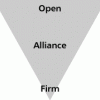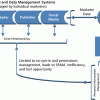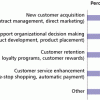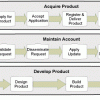Strategic advice to leverage new technologies
Technology is at the heart of nearly every enterprise, enabling new business models and strategies, and serving as the catalyst to industry convergence. Leveraging the right technology can improve business outcomes, providing intelligence and insights that help you make more informed and accurate decisions. From finding patterns in data through data science, to curating relevant insights with data analytics, to the predictive abilities and innumerable applications of AI, to solving challenging business problems with ML, NLP, and knowledge graphs, technology has brought decision-making to a more intelligent level. Keep pace with the technology trends, opportunities, applications, and real-world use cases that will move your organization closer to its transformation and business goals.
Recently Published
By capitalizing on Internet-enabled technology, organizations have increased visibility and interactivity with their customers through the implementation of CRM systems, which have helped organizations streamline transactions, learn about customer preferences, and boost relationships.
The face of marketing is changing, forever, and it's important for all marketers to be aware of the trends behind this change so that they are prepared to engage consumers in the future. Over the last few decades, both large and small companies throughout nearly all industries have learned to survive and thrive on the collection, aggregation, analysis, ownership, and use of consumer information in order to develop profiles of each and every individual they interact with or want to.
In this issue, we've turned our attention to a topic of perpetual importance: the relationship we have with our customers and the means by which we manage and derive value from our interactions with them. The new thing here is the emergence of customer-managed interactions (CMI), which is receiving substantial push and gaining momentum due to the increasing technology savvy of consumers. CMI is the revolutionary next step — and perhaps the future coexisting first cousin — to the well-established CRM.
This survey examined how well organizations are equipped to work with the new reality in which consumers have some degree of control over the increasing amounts of personal information they provide online, including with whom they share that information. Nearly half (44%) of the 32 responding organizations are headquartered or based in North America, with 19% in Europe, 19% in Australia/Pacific, 9% in Africa, 6% in Asia, and 3% in the Middle East.
In this issue of Cutter Benchmark Review, we consider the future of customer relationships, the management of those relationships, and the role that IT and the IT shop can play in the evolution of effective customer relationship management (CRM). Right off the bat it's important to ponder some questions that are fundamental to how we understand, on the most basic level, the dynamic and structure of the relationships we have with our customers. Think about the following for a moment: In today's world, is it really possible (or even desirable) to "own" a customer anymore? How is our present use of IT aiding our relationships with our customers? And in the current environment of data overload and incredible accessibility of information and services, is it possible (or even wise) to expect consumers to continue to relinquish control of what is truly theirs, namely, their own personal information?
The value chain concept dates to 1985, so if it was able to ground business-IT discussions in a rational assessment of IT's contribution to value generation, we'd know it by now. The revival of this notion among architects is going to make IT sound as if they care about business concepts, but the only sure benefit will be to consulting firms' revenues.
In the midst of seemingly endless debates about the various approaches and techniques for business improvement, the concept of value is often lost. While we all intuitively know what value means, the use of value-driven approaches remains woefully problematic. In the 25 years since the publication of Michael Porter's initial work on value chains,1 the way in which value has been used and defined has remained a source of confusion and ambiguity.
Numerous companies are considering as a strategic corporate initiative the adoption of an enterprise business architecture (EBA) built using James Martin's value streams. While researching and analyzing the EBA, some are rediscovering Michael Porter's value chain analysis, which is used to achieve a competitive advantage. Many find this reawakening quite logical, and as this article will explain, a natural extension of the EBA's value streams may indeed lead to competitive advantage.










